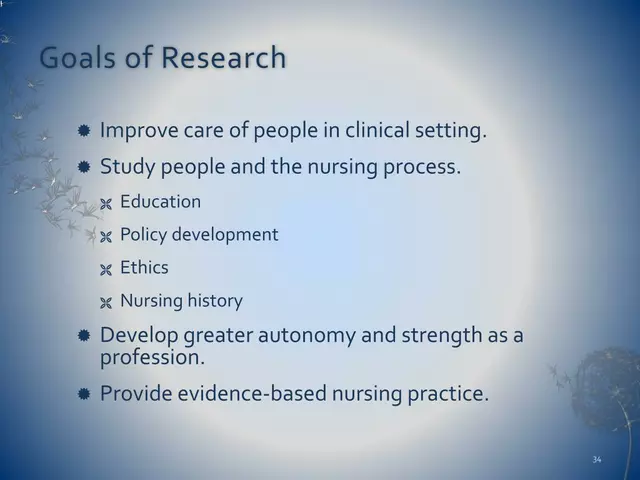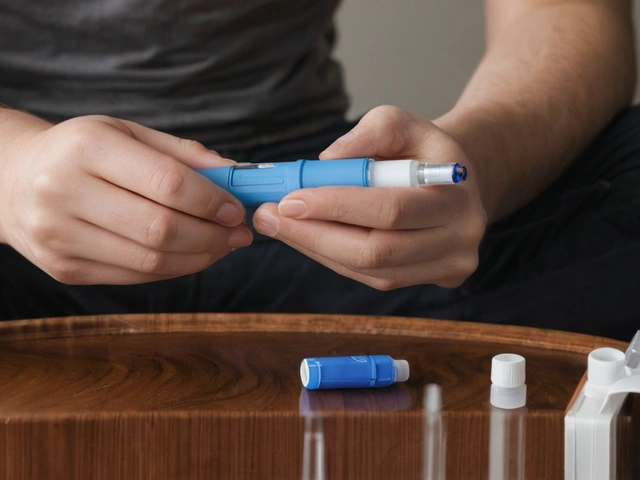Australia’s sun might be strong, but you’d be surprised how many people still struggle with vitamin D levels. Now toss kidney problems into the mix, and it all gets even trickier. That’s where Alfacip walks in—a name that doesn’t ring a bell for most, but its role is massive. If you’ve never seen the tiny Alfacip capsules at the chemist, you’re probably not one of the quiet army dealing with bone issues or advanced kidney disease. So why do nephrologists and rheumatologists keep coming back to this underrated supplement?
What is Alfacip and Why Is It Used?
Alfacip isn’t some flashy new vitamin—it's actually the brand name for alfacalcidol, a vitamin D analog. Unlike the over-the-counter vitamin D3 you see clogging the supplement shelves—those big softgels and amber bottles—alfacalcidol’s power isn’t in how much sunlight you get, but in how your body puts vitamin D to work. Here's what makes it fascinating: Normal vitamin D needs your liver and kidneys to convert it into its active form, calcitriol. But kidney disease can wreak havoc on this process. If the kidneys aren’t up for converting, your bones and calcium levels pay the price, and no amount of beach time or chugging cod liver oil will save you. That's why doctors sometimes prescribe Alfacip for people with chronic kidney issues, parathyroid disorders, or certain bone conditions, because it already comes ‘pre-converted’—meaning it’s ready for your body to use with far less fuss.
A lot of folks get their first introduction to Alfacip when basic vitamin D supplements stop working. Imagine someone who’s getting weaker, maybe their bones ache, or blood tests show their calcium keeps sliding downward, even though they’re following all the diet and lifestyle tips. For these patients, Alfacip can make the difference between persistent pain and functioning well. It’s especially common in people on dialysis, those with chronic kidney disease stage 4 or 5, or even after kidney transplants. Rheumatologists might reach for it when dealing with stubborn low bone density not fixed by other standard treatments.
There are plenty of misconceptions floating around. Some think it’s just a ‘super vitamin D’. The reality’s more nuanced. Say you’re dealing with rickets as a child, or osteoporosis in later life, and for some reason standard vitamin D isn’t doing what it should. That’s when an analog makes sense. Doctors keep a close eye on blood calcium and phosphate levels here, because too much of a good thing with Alfacip can flip the switch from weak bones to kidney stones or vascular problems. It’s far from a ‘pop and forget’ kind of pill. That said, a 2022 meta-analysis in the Clinical Kidney Journal showed that alfacalcidol can improve bone mineral density in chronic kidney patients, reduce the incidence of fractures, and help stabilise calcium balance—if doses are personalised and monitoring tight.
If you’re just curious about what this actually looks like at a population level, here’s a quick snapshot. The Australian Institute of Health and Welfare estimated around 1.7 million Aussies over 18 had some stage of chronic kidney disease in 2023, and the vast majority of them experienced vitamin D processing issues at some point. So there’s a real-world need—especially among those living in southern states or the elderly, who rarely get enough direct sunshine or have other medical factors at play.
| Stage of Kidney Disease | Risk of Vitamin D Deficiency (%) |
|---|---|
| Stage 1-2 | 20% |
| Stage 3 | 35% |
| Stage 4 | 60% |
| Stage 5 | 77% |

How to Use Alfacip Safely: Dosages, Tips, and Monitoring
Here’s where things get personal—no two prescriptions look quite alike, and that’s by design. Typical Alfacip dosages hover between 0.25 to 1 microgram daily, depending on what your bloodwork reveals and how your body reacts over time. The trick with any vitamin D analog is not just swallowing the pill, but sticking to a rhythm: regular blood tests, paying attention to changes in muscle strength or bone pain, and keeping your GP or specialist in the loop. If you just grab a bottle off the shelf and start dosing, you’re playing with fire. Too much alfacalcidol can boost calcium to dangerous levels (hypercalcaemia), setting you up for kidney stones or even heart problems. On the flipside, too little won’t fix bone or muscle issues at all.
For folks with chronic kidney disease stage 4 or 5, there’s usually a monthly or fortnightly blood test routine—doctors watch not just vitamin D, but calcium, phosphate, and parathyroid hormone (PTH). If calcium climbs too fast, the dose gets lowered or paused. If you ever get weird symptoms—think nausea, vomiting, confusion, or headaches—it might be a sign things are off, and a quick call to the doctor is the smart move. The same applies if muscle cramps, irregular heartbeat, or bone pain just won’t let up.
For anyone with kids who are prescribed Alfacip, there’s extra caution. Pediatric doses run even smaller, and parents need to be on alert for slowed growth, fussiness, or changes in appetite or thirst. These signs get checked relentlessly by pediatricians because in growing bodies, dose mistakes can have lifelong consequences. And, contrary to what you might read in Facebook groups, doubling up on standard vitamin D with Alfacip isn’t recommended unless your specialist gives the green light. Too much combination swings the pendulum from deficiency straight to toxicity, often with no warning.
Questions about mixing with other drugs come up all the time. The big ones to keep tabs on: antacids with magnesium, some blood pressure meds (like thiazide diuretics), certain epilepsy treatments, and even some steroids can mess with calcium balance or how your gut absorbs vitamin D. That’s why pharmacists always run through medication lists before their first Alfacip script. And, for those on a renal diet, balancing calcium with phosphate binders, and keeping an eye on dietitian advice, is just part of the routine—nothing prescribed in a kidney clinic happens in a vacuum.
If you ever miss a dose, resist the urge to double up the next time around. Just skip and move on. And try to take it at roughly the same time daily, since routines boost adherence and help you and your care team spot if something’s suddenly off. If you’re switching brands, always check the dose—quite a few names (like One-Alpha, Roxalpha, and Calcitriol) float through pharmacies, and mixing up strengths or formulations can trip up even the sharpest patient. Most importantly, always store Alfacip in a dry spot below 25°C and away from direct sunlight, since the capsules can degrade under the harsh Aussie heat.
- Stick to your prescribed dose—don’t adjust without your doctor’s say-so.
- Book regular blood check-ups (calcium, phosphate, PTH).
- Alert your GP if any weird symptoms pop up—nausea, muscle weakness, confusion.
- Keep a detailed medication list for your pharmacist and kidney team.
- Store your capsules properly—Australian summer heat can zap their potency.
Bottom line: Alfacip isn’t a run-of-the-mill supplement. It’s powerful, but it’s also a bit of a balancing act between getting enough active vitamin D and not tipping into trouble. For those who need it, it’s truly a gamechanger—but only when everyone (patient, doctor, pharmacist) is all in, all the time.

Outcomes, Side Effects, and What to Watch For with Alfacip
This is where things get real for a lot of Aussies, because enduring fatigue, bone pain, or muscle cramps can sabotage daily life—work, hobbies, or time with mates. While Alfacip isn’t a miracle drug, it has been proven to lift quality of life and reduce complications for the right patients. A study at Sydney’s St Vincent’s Hospital tracked patients with severe kidney disease over two years and found that those on alfacip had half as many bone fractures and hospitalisations. That’s huge, considering how a single hip break or long hospital stay can throw someone’s life off kilter for months.
But with results comes responsibility. The most common side effect is raised blood calcium—let’s break that down a bit further. If calcium climbs high, you’ll notice things like nausea, vomiting, belly pain, constipation, confusion, or even an irregular heartbeat. Long term, there’s risk for kidney stones as calcium and phosphate get deposited in the wrong places. High phosphate is another worry, especially in chronic kidney patients, because it can make bones brittle and clog up blood vessels over time. Less common, but still possible: itchy skin, muscle weakness, or headaches. If you’re at the start of your Alfacip journey, it pays to jot down new symptoms so your care team can see patterns early.
Elderly patients and those with multiple health problems have an extra layer of risk. As we age, our kidney and liver processing slows, making it easier to tip into high calcium. That’s why the starting dose gets dialed way down for those over 65, and their GP or nephrologist will want more frequent check-ups, particularly if there’s a heart history or a long list of medications. Many patients are also managing phosphate binders, loop diuretics, or statins—there’s a delicate ‘cocktail’ going on that has to be tracked carefully. Even dehydration in summer can temporarily spike blood calcium—yep, it really does matter if you forget to drink enough water during a Perth heatwave.
There’s buzz right now about using Alfacip off-label for things like osteoporosis not tied to kidney issues, certain autoimmune diseases, and even MS (multiple sclerosis). The evidence for these uses is mixed. While some early case reports hinted at improvement, larger trials haven’t always shown the same bang for buck. If you see ads promising quick fixes or miracle cures with designer vitamin D, pause and look for credible sources—usually, if it sounds too good to be true, it is. Your best bet is to stick with what your kidney or bone specialist recommends, and not chase after internet fads.
Some practical tips for people already on Alfacip:
- Double-check your medicine cabinet for other hidden sources of vitamin D—overlapping can lead to problems.
- Ignore the myths about ‘maximising’ results with high-fat diets or extra sun exposure—your body can’t shortcut the kidney conversion step.
- Enlist a family member to help track symptoms—things can sneak up slowly.
- Remember, results take a bit of time. Most people notice improved energy and less bone pain within 8 to 12 weeks, but blood test monitoring goes on for months.
- If you’re travelling, ask your GP for a letter—you’d be surprised how many overseas airports question unfamiliar medicines.
Here’s the truth: Alfacip isn’t glamorous, but it’s quietly life-changing for those who need it. It’s not about chasing trendy supplements—it’s about precision, vigilance, and working closely with your doctor to dodge complications and stay functional. And if you’ve ever felt frustrated at the sheer number of pills, tests, or appointments, remember—each part of that routine is what keeps your bones, muscles, and mood stable when everything else gets unpredictable. These days, that kind of peace of mind is worth its weight in gold.

 Buy Cheap Generic Paxil Online - Safe Tips & Price Guide
Buy Cheap Generic Paxil Online - Safe Tips & Price Guide
 Why Generic Drug Prices Vary So Much Between States
Why Generic Drug Prices Vary So Much Between States
 The History and Development of Chlorthalidone
The History and Development of Chlorthalidone
 Understanding Drug Labels: A Complete Medication Label Breakdown
Understanding Drug Labels: A Complete Medication Label Breakdown
 Comparing Diabetes Medications: Rybelsus Versus Ozempic Explained by Expert Betul
Comparing Diabetes Medications: Rybelsus Versus Ozempic Explained by Expert Betul
Kim and Lin
July 18, 2025 AT 02:35Hey everyone! I just read this post about Alfacip and honestly, I think it’s super important to highlight how careful one needs to be when supplementing with alfacalcidol. 😊
It’s not just about popping a pill and hoping for the best, especially if you're dealing with kidney issues or bone problems. Dosage matters big time, and side effects can sneak up if you’re not monitoring things properly.
Also, I appreciate the practical tips mentioned for safe supplementation. More posts like these with clear instructions could save people from making dangerous mistakes!
Who else here has experience with Alfacip? I’m quite curious about real-world results from other users!
Feel free to share your stories or even questions, so we can all learn together and stay safe! 🌟
Kemari Nielson
July 18, 2025 AT 03:35This was a well-written overview of Alfacip. I liked how it concisely covered the uses, dosage, and side effects without unnecessary jargon.
It's crucial for patients, especially those with kidney conditions, to consult their healthcare provider before starting this supplement.
Self-medicating or adjusting doses without professional advice can lead to serious complications.
Given its potency, a clear understanding of side effects is vital, and this post encapsulates that nicely.
I'd recommend people check their calcium levels routinely when on alfacalcidol to avoid hypercalcemia.
Steve Helsel
July 18, 2025 AT 04:35Honestly, I don’t see what’s so special about Alfacip—alfacalcidol is just a vitamin D analog; nothing groundbreaking here.
Most people can get enough vitamin D through diet and sun exposure, so why bother?
That said, patients with specific kidney or bone issues might need it, but this is not something for the average person.
Side effects and dosage guidelines already exist for years; no need to hype it up.
In my opinion, a basic summary like this doesn’t add much value.
Steve Moody
July 18, 2025 AT 05:35Ah, quite correct you are about Alfacip’s role, as a potent form of vitamin D, yet the nuances of its pharmacodynamics are often overlooked!!!
For those unaware, alfacalcidol bypasses the renal hydroxylation phase, making it particularly beneficial for patients with renal insufficiency—quite a clever pharmacological trick, don’t you agree?
As for dosage, it must be meticulously titrated to prevent hypercalcemia, which can manifest itself with quite severe symptoms, indeed!!!
Moreover, the interplay between calcium and phosphate metabolism in such cases demands vigilant monitoring, lest the therapy falters!
It behooves any patient or physician to familiarize themselves deeply with this compound’s profile before embarking on treatment.
Adrian Hernandez
July 18, 2025 AT 06:35Seriously, folks, be cautious with supplements like Alfacip. The big pharma complex is pushing these drugs hard to keep us hooked.
They pretend it supports bone health, but nothing is clear about long-term side effects, and the dosage recommendations are often influenced by lobbying, not science.
The side effects section? Probably just the surface—who knows what they're hiding.
And what about interactions with other meds? That's often hidden in the fine print.
I always recommend digging deep and not taking these claims at face value. Stay skeptical!
duncan hines
July 18, 2025 AT 07:35Ugh, yet another overhyped supplement everyone’s talking about. 🙄
They throw around terms like 'bone health support' and 'kidney patient assistance,' but who knows if it actually works?
Side effects? Management? Yeah, right, like patients read all that fine print.
Sure, dosage matters—but are people really following those instructions or just winging it?
This stuff probably just makes the drug companies richer while patients face unnecessary risks.
Mina Berens
July 18, 2025 AT 08:35Hey 😊, I found this post super informative and balanced. I love how it doesn’t just hype the benefits but also honestly explains side effects and precautions.
For those of us who are more chill about medical stuff but still want to take care of ourselves, posts like this are a gem!
And hey, the tips for safe supplementation are really helpful because supplements can sometimes be tricky.
Anyone here tried Alfacip and noticed a real difference? Would love to hear personal experiences!
It helps to validate what’s written here, you know? Cheers! 💊✨
Chris Meredith
July 21, 2025 AT 19:55As an enthusiast of biochemical pathways and their clinical applications, I must remark that alfacalcidol’s unique feature lies in its 1-alpha hydroxyl group, permitting direct conversion to active calcitriol in the liver, circumventing renal insufficiency!
This mechanistic advantage makes it indispensable in nephrology and osteology frameworks.
However, its lipophilicity and binding affinity to vitamin D receptors call for precision in dosing regimens to mitigate hypercalcemia risks.
I encourage peers to consider the intricate balance between therapeutic benefits and potential toxicities when leveraging such analogs.
Furthermore, emerging studies point towards adaptive modifications in dosage in chronic kidney disease—an area ripe for exploration!
Jessie Eerens
July 25, 2025 AT 07:15Humans tend to seek panaceas in supplements such as Alfacip!!! However, the real question is: how profound are its impacts beyond advertised claims???
Philosophically, alfacalcidol challenges our understanding of supplementation efficacy and medical reliance on synthetic analogs!!!!
It behooves us to dissect whether the benefits truly surpass placebo effects in long-term bone health management!!!
One must not be mesmerized solely by the pharmacological allure but critically appraise clinical outcomes and patient quality of life!!!
Such reflection encourages a more discerning approach to supplementation practices worldwide!!!
Caroline Lane
July 28, 2025 AT 18:35It’s frustrating seeing how so many people jump on the supplement bandwagon without understanding the medicine or the science behind it.
Alfacip might sound like a miracle for bones and kidneys, but the side effects and dosage complexities are no joke.
People need better education so they don’t get hurt or misled by marketing.
And honestly, it’s concerning how easily supplements are sometimes prescribed or self-administered without real medical supervision.
Has anyone found reliable resources or guides that explain this stuff clearly for patients?
Geneva Lyra
August 1, 2025 AT 05:55Hi all! I appreciate the diversity of opinions here. It’s great to see both cautious voices and detailed scientific insights.
From a cultural perspective, it’s interesting how medical supplements like Alfacip are perceived so differently depending on background and access to healthcare information.
I believe that inclusive mentorship and collaborative knowledge sharing can help bridge gaps in understanding.
For those new to alfacalcidol, it’s vital to approach it with respect for its potency and to ensure communication with healthcare providers is clear and ongoing.
Hopefully, discussions like this make it easier for people to make informed decisions about their health.